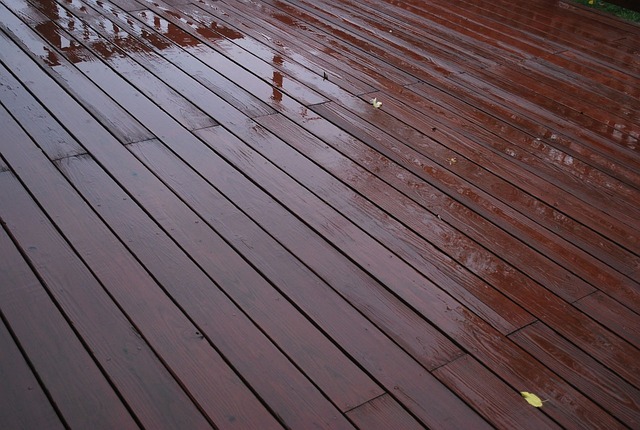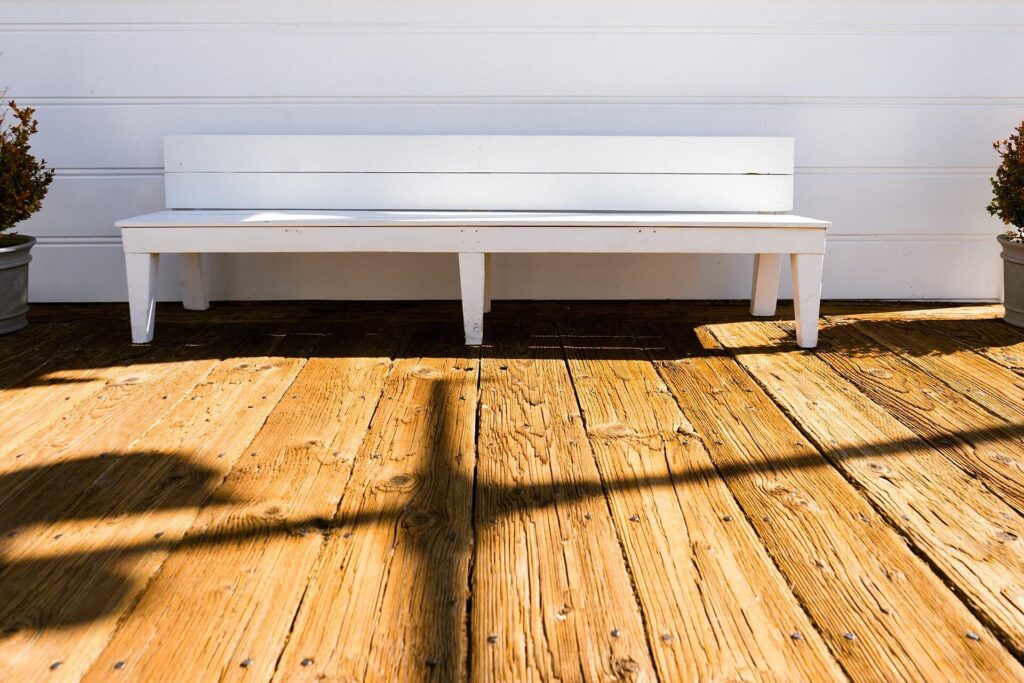Building a wooden garden deck is a fantastic way to enhance your outdoor space, providing a beautiful area for relaxation, entertainment, and enjoying nature. Whether you’re a seasoned DIY enthusiast or a beginner looking to embark on a new project, constructing a wooden deck can be both rewarding and manageable with the right guidance. This article, “Top Tips for Building a Wooden Garden Deck,” will walk you through the essential steps, tips, and considerations to ensure your decking project is a success.

Why Build a Wooden Garden Deck?
Adding a wooden garden deck to your property offers numerous benefits, making it a popular choice for homeowners. A wooden deck creates a seamless transition between your indoor and outdoor spaces, expanding your living area and providing a versatile spot for various activities. It enhances the aesthetic appeal of your garden, adds value to your home, and can be customized to suit your style and needs. Moreover, wooden decks are relatively easy to build and maintain, offering a natural, warm, and inviting atmosphere.
Planning Your Wooden Garden Deck
Proper planning is crucial for the successful construction of a wooden garden deck. Start by assessing your outdoor space to determine the best location and size for your deck. Consider factors such as sun exposure, views, privacy, and accessibility. It’s also important to check local building codes and regulations, as well as obtain any necessary permits before starting construction. Creating a detailed plan that includes measurements, materials, and a budget will help you stay organized and on track throughout the project.
Choosing the Right Materials
Selecting the right materials is key to building a durable and attractive deck. While traditional wood options like cedar, redwood, and pressure-treated pine are popular for their natural beauty and durability, composite decking materials offer low maintenance and long-lasting performance. Consider the pros and cons of each material, including cost, appearance, maintenance requirements, and environmental impact. For instance, cedar and redwood are naturally resistant to insects and decay, while composite decking is made from recycled materials and requires minimal upkeep.
Essential Tools for Deck Construction
Having the right tools is essential for efficient and safe deck construction. Basic tools you’ll need include:
- Measuring Tape: For accurate measurements.
- Circular Saw: For cutting deck boards and framing lumber.
- Power Drill: For drilling holes and driving screws.
- Level: To ensure your deck is even.
- Hammer: For nailing and general construction tasks.
- Safety Equipment: Such as gloves, safety glasses, and ear protection.
Investing in quality tools will make the construction process smoother and more enjoyable.
Designing Your Wooden Garden Deck
Designing your deck involves deciding on its layout, style, and shape. Popular designs include rectangular, square, L-shaped, and multi-level decks. Consider how you plan to use the deck and how it will integrate with your home and garden. Incorporate features such as built-in seating, planters, and pergolas to enhance functionality and aesthetics. Sketching out your design or using a deck design software can help you visualize the final result and make necessary adjustments before construction begins.
Preparing the Ground for Deck Construction
Preparing the ground is a critical step to ensure a stable foundation for your deck. Start by clearing the area of any vegetation, rocks, or debris. Level the ground using a shovel and a rake, and compact the soil to create a firm base. In some cases, you may need to install a weed barrier or lay down gravel to improve drainage. Proper ground preparation prevents future issues such as uneven decking and water pooling.

Building the Foundation
The foundation of your deck supports the entire structure, so it’s important to build it correctly. Common foundation types include concrete piers, deck blocks, and post-and-beam construction. Concrete piers and deck blocks are suitable for smaller decks, while post-and-beam construction provides greater stability for larger decks. Ensure the foundation is level and securely anchored to the ground. This step involves digging holes, pouring concrete, and setting posts, which are essential for a solid and durable deck.
Installing the Deck Frame
The deck frame is the skeleton of your deck, providing support for the deck boards. Begin by installing the ledger board, which attaches to your house and serves as the anchor point for the deck frame. Next, install the joists, which are horizontal supports running perpendicular to the ledger board. Use joist hangers to secure the joists to the ledger board and beams. Ensure the frame is square and level, as this will affect the overall stability and appearance of your deck.
Laying the Deck Boards
Laying the deck boards is a critical step that determines the final look and feel of your deck. Start at the outer edge and work your way toward the house, leaving a small gap between each board for drainage and expansion. Use a chalk line to ensure the boards are straight and evenly spaced. Secure the boards with deck screws or hidden fasteners, which provide a clean, nail-free surface. Cutting the boards to fit around posts and other obstacles may be necessary to achieve a seamless finish.
Finishing Touches for Your Deck
The finishing touches can elevate your deck from functional to fabulous. Consider adding railings for safety and style, choosing from materials like wood, metal, or glass. Stairs provide easy access to your deck and can be customized to fit your design. Lighting is another important feature, enhancing both safety and ambiance. Solar lights, LED strips, and post cap lights are popular options. Adding decorative elements such as planters, furniture, and outdoor rugs can personalize your deck and make it an inviting space.
Maintaining Your Wooden Garden Deck
Regular maintenance is essential to keep your wooden deck looking great and performing well. Here are some maintenance tips:
- Cleaning: Sweep your deck regularly to remove dirt and debris. Use a deck cleaner and a scrub brush to remove stains and mildew.
- Staining: Apply a high-quality stain to protect the wood from UV damage and moisture. Reapply every 2-3 years, or as needed.
- Sealing: Use a water-repellent sealer to prevent water damage and extend the life of your deck.
Proper maintenance ensures your deck remains a beautiful and enjoyable outdoor space for years to come.
Common Mistakes to Avoid
Avoiding common mistakes can save you time, money, and frustration. Some pitfalls to watch out for include:
- Poor Planning: Failing to plan adequately can lead to costly changes and delays.
- Ignoring Permits: Not obtaining the necessary permits can result in fines and the need to redo work.
- Improper Foundation: A weak foundation can cause structural issues and deck failure.
- Using the Wrong Materials: Choosing inferior or inappropriate materials can reduce the lifespan of your deck.
- Neglecting Maintenance: Skipping regular maintenance can lead to costly repairs and a shortened deck life.
Being aware of these common mistakes helps ensure a smooth and successful deck-building process.
Cost Considerations
Budgeting for your deck project involves considering the cost of materials, tools, and labor. Here’s a breakdown:
- Materials: Wood, composite decking, fasteners, and finishes.
- Tools: Purchasing or renting necessary tools.
- Labor: Costs if hiring professionals.
Comparing prices and creating a detailed budget helps you manage expenses and avoid surprises.
Deck Safety Tips
Ensuring the safety of your deck is paramount. Here are some tips:
- Regular Inspections: Check for loose boards, nails, and structural issues.
- Proper Lighting: Install adequate lighting to prevent accidents.
- Railings: Ensure railings are sturdy and at the appropriate height.
Implementing safety measures protects your family and guests.
Creative Deck Accessories
Enhance your deck with creative accessories such as:
- Furniture: Comfortable seating, tables, and loungers.
- Plants: Add greenery with potted plants and hanging baskets.
- Decor: Outdoor rugs, cushions, and decorative items.
These accessories add comfort and style to your outdoor space.
Seasonal Deck Care
Caring for your deck varies by season. Here’s a seasonal guide:
- Winter: Remove snow promptly to prevent damage. Apply a water-repellent sealer before winter.
- Summer: Clean and inspect your deck regularly. Apply a UV-protective stain to prevent sun damage.
Adapting your care routine to the seasons ensures year-round deck health.
Environmental Considerations
Building an eco-friendly deck involves choosing sustainable materials and practices. Consider:
- Recycled Materials: Use composite decking made from recycled plastics and wood fibers.
- Sustainable Wood: Choose wood certified by the Forest Stewardship Council (FSC).
- Eco-Friendly Finishes: Opt for low-VOC stains and sealers.
Incorporating these considerations reduces your environmental impact.
Enhancing Your Deck’s Longevity
Prolonging the life of your deck involves regular maintenance and protection. Tips include:
- Regular Cleaning: Prevents dirt and mildew buildup.
- Staining and Sealing: Protects wood from the elements.
- Inspections: Identify and address issues early.
These practices help your deck withstand the test of time.
DIY vs. Hiring a Professional
Deciding between DIY and hiring a professional depends on your skills, time, and budget. DIY offers cost savings and a sense of accomplishment, while professionals provide expertise and efficiency. Consider your comfort level and project complexity when making this decision.
Incorporating Water Features
Adding water features like ponds, fountains, or waterfalls can enhance your deck’s ambiance. Consider:
- Space: Ensure you have enough space for the feature.
- Maintenance: Be prepared for regular upkeep.
- Safety: Install safety measures to prevent accidents.
Water features create a tranquil and visually appealing environment.
Lighting Your Deck
Proper lighting enhances the usability and safety of your deck. Options include:
- Ambient Lighting: Creates a warm, inviting atmosphere.
- Task Lighting: Provides focused light for specific areas.
- Accent Lighting: Highlights architectural features and plants.
Choosing the right lighting enhances your deck’s functionality and aesthetics.
Deck Maintenance Schedule
Establishing a maintenance schedule helps keep your deck in top condition. Tasks include:
- Monthly: Sweep and inspect your deck.
- Seasonally: Clean, stain, and seal as needed.
- Annually: Perform a thorough inspection and address any repairs.
A regular maintenance schedule ensures your deck remains safe and beautiful.
FAQs
What type of wood is best for a garden deck?
Cedar and redwood are popular choices for their durability and resistance to decay.
How often should I stain my wooden deck?
Typically every 2-3 years, depending on the climate and exposure to elements.
Can I build a deck without a permit?
Check local building codes and regulations, as permits are often required for deck construction.
What is composite decking?
Composite decking is made from a mix of wood fibers and recycled plastics, offering low maintenance and long-lasting durability.
How do I clean my wooden deck?
Use a deck cleaner and a scrub brush to remove dirt, stains, and mildew. Rinse thoroughly with water.